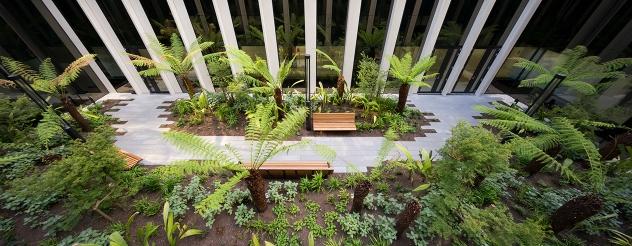
Greener
All-electric means the hospital runs on only electricity. It becomes greener when the electricity comes from renewable sources - wind and sun.
There are clear links between the wellbeing of Victorians and a healthy environment.
This is why the Victorian Health Building Authority (VHBA) is making significant progress in reducing environmental impacts.
Hospitals use a lot of energy to provide safe and effective care for patients all day, every day. And there are more than 200 public and private hospitals in Victoria.
From operating medical equipment to powering air conditioning, Victorian hospitals and health services contribute a fifth of the Victorian Government’s energy related climate emissions.
However, there are solutions available to help us create a more environmentally sustainable health system.

Tiernan Humphrys, Senior Technical Specialist, Environmental Sustainability, Victorian Health Building Authority‘It is crucial that the health sector plays a central role in driving action on climate change, seeking solutions and showing leadership to the community.’
VHBA is including sustainable features in new and existing health, mental health and aged care infrastructure across Victoria.
Victoria’s Climate Change Strategy sets out to halve greenhouse gas emissions by 2030 and achieve net-zero emissions by 2050.
A net zero target means that by 2050 Victoria will reduce its emissions as far as possible, and any remaining emissions will be offset.
By installing lower energy alternatives now, we can ensure that our healthcare system delivers world class healthcare with the lowest possible footprint.
Energy efficiency and the use of renewable energy is at the forefront in making our healthcare more sustainable. For all new hospitals being built in Victoria, 60 per cent of the roof space is designed for solar panels. This involves several design considerations including roof spaces that face the right direction for maximum exposure to the sun and allowing for the electrical infrastructure for solar panels.
The solar panels installed in Victorian hospitals have already made a significant impact. In 2018-19, solar arrays on Victoria’s public hospitals generated 1.4 gigawatt-hours of electricity. In 2020-21 this increased to 9.8 gigawatt-hours and we are on track to generate more than 10 gigawatt-hours of solar power in 2022-23. The increase in solar energy reduced carbon emissions by some 9,500 tonnes.
Additionally, by taking steps to increase biodiversity around facilities and campuses, we enhance patients, staff and visitors experience and lighten the facility's environmental footprint.
Our sustainability guidelines aim to deliver a net biodiversity increase to the site from landscaping. We do this by using locally indigenous flora, planting for habitat and enhancing biodiversity.
These sustainable design choices will contribute to lower environmental impacts and operating costs, and support the creation of healthier, healing environments for patients, visitors and staff.
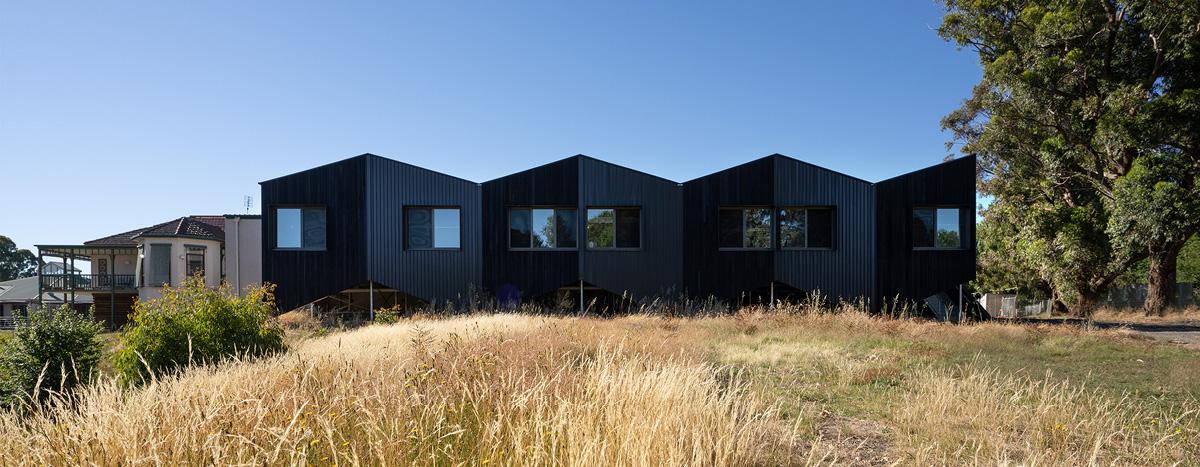
Outdoor space at Creswick Nursing Home – Dementia Friendly Unit
VHBA’s latest projects will be ready to take advantage of the shift to renewables.
It may be surprising, but currently approximately 40 per cent of the energy hospitals use comes from natural gas. Gas creates more emissions than renewable electricity, and it is not a renewable energy.
The Victorian Government has committed to using 100 per cent renewable electricity from 2025 for all its operations, including public hospitals.

Julian Freeland, Sustainability Project Lead, Environmental Sustainability, Victorian Health Building Authority‘Each year the Victorian Government operations continue to make significant progress in the use of renewables, helping to send a message to the community and industry that renewable electricity is the future.’
In Frankston, we are building our first all-electric powered addition to an existing hospital.
The Frankston Hospital redevelopment will include a new all-electric 12-storey clinical services tower. It will provide:
The redevelopment will also incorporate innovative energy-saving technology to reduce energy and water consumption and minimise resource use.
All-electric means the hospital runs on only electricity. It becomes greener when the electricity comes from renewable sources - wind and sun.
All-electric hospitals help build resilience to climate change by using renewable energy, and not contributing to future climate-affecting emissions.
We can design all-electric hospitals to be more efficient than hospitals that also use gas. If the electricity is generated from a renewable source, the emissions savings are even greater.
Hospitals built now will operate for many years and need to be designed to withstand future conditions. An all-electric hospital will mean many years of reduced carbon emissions.
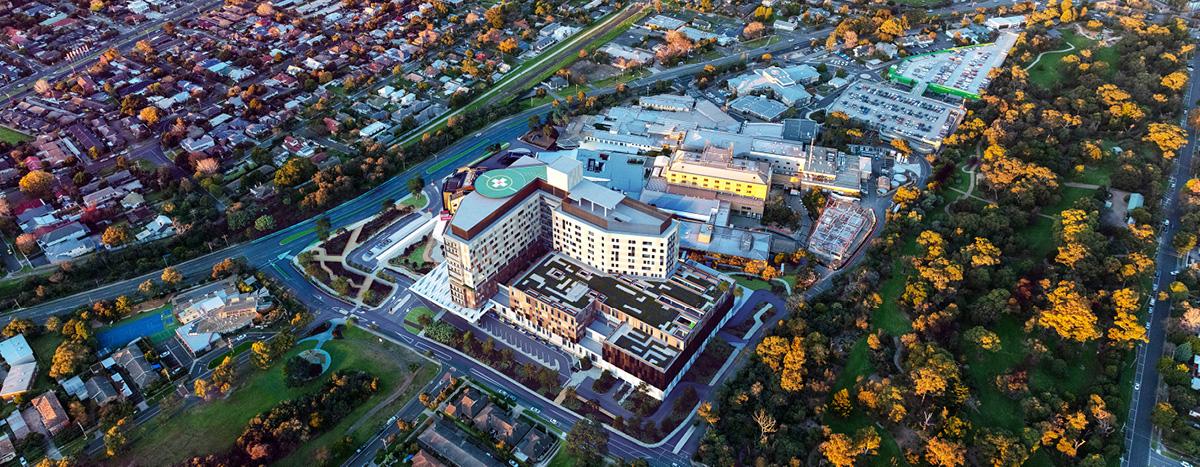
Artist impression: Aerial view of the Frankston Hospital redevelopment
While our new projects may be leading the way in sustainability, what does this mean for all the hospitals that are already built?
While Victoria’s existing hospitals and healthcare facilities aren’t yet all-electric, we’re working on other ways to improve the energy efficiency and environmental sustainability across the public health system.
We are continuing to invest in lighting replacements, energy efficiency upgrades and installing on-site solar to reduce dependency on the electricity grid in Victorian hospitals.
In hospitals that are being refurbished, we’re investing in efficient heating and cooling. We also support the replacement of gas appliances and equipment with electrical equipment and provide grants to help eligible health services upgrade.
At Ballan Health and Care, high efficiency boilers have been fitted in the facility. Funded through the Regional Health Infrastructure Fund, these boilers will reduce the footprint of the hospital on the environment.
At smaller healthcare facilities, we’re supporting refurbishments to enable buildings to go all-electric. These facilities tend to require less energy to operate given that they are physically smaller. This makes it easier to heat and cool with all-electric equipment.
The Regional Health Solar Fund (2019-2021) installed around 8.8 megawatt-peak of solar photovoltaic (PV) arrays across 79 Victorian health facilities.
We have removed gas infrastructure and installed solar panels at Lismore Community Health Centre and Macarthur Community Health Centre in regional Victoria. The two community health centres are now operating without using liquified petroleum gas.
Another recent project was switching the steam boiler kettle, hot box, and bain marie in the Colac Hospital kitchen from gas to electric, allowing the removal of a gas boiler.
Beaufort and Skipton Hospital has installed biomass boilers that burn wood chips and olive pips to provide heating and hot water.
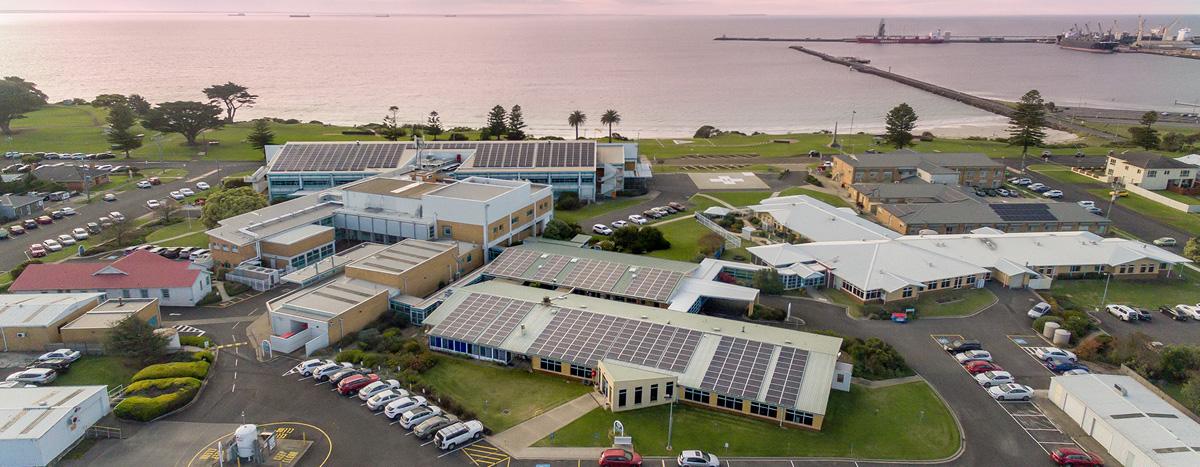
Image of Portland District Health with 320kv of solar panels funded through the Regional Health Solar Fund
When we design our hospitals and healthcare buildings to be more environmentally sustainable, the benefits aren’t just to the environment. Sustainable practices create healthier, healing environments for patients, visitors and staff.
Learn more about our sustainability projects.
This page was updated 2 October 2023.

Stay up-to-date on all our announcements and upcoming projects by signing up to our eNews – VHBA In Brief.

07 August 2023
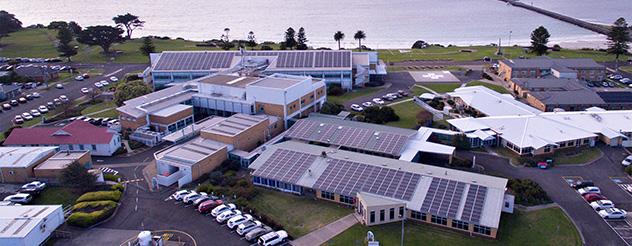
26 August 2022
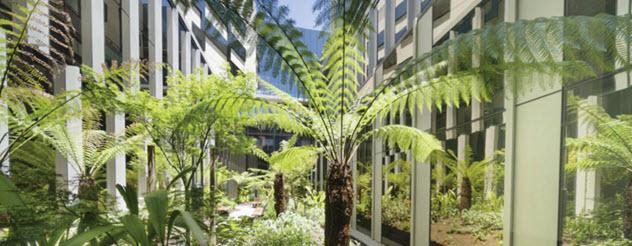
22 October 2021
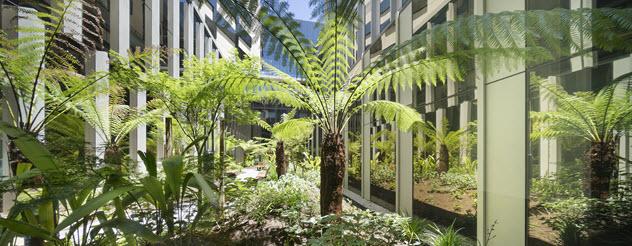
02 October 2023